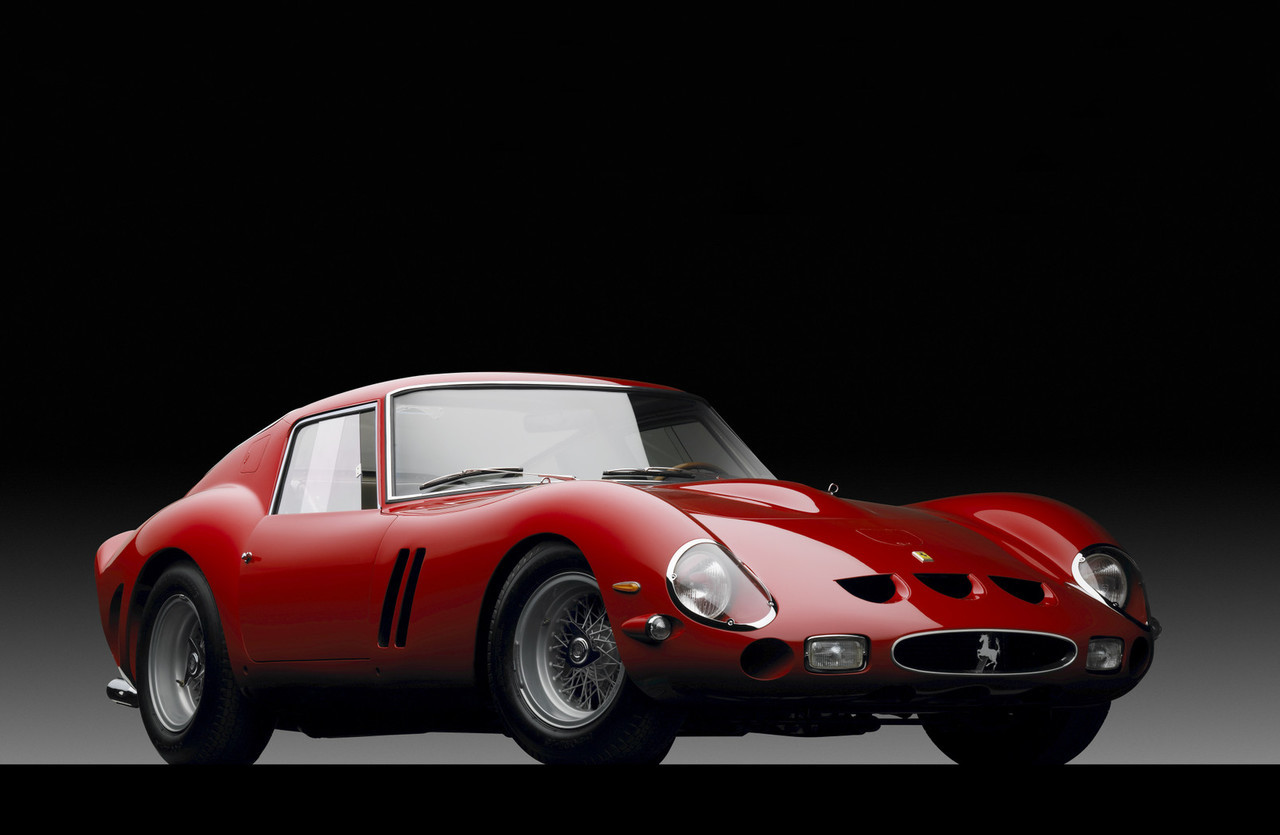The Ferrari 250 GTO is 55

07 agosto 2017
Words: Jason Barlow
Ferrari gets ready to celebrate another anniversary
As the 250 GTO prepares to celebrate its 55th anniversary, it’s time to reflect again on this timeless car.
Why does this Ferrari still prevail, seemingly above all others? Partly because the GTO represents the end of the legendary 250 GT bloodline.
But it was also a Ferrari that competed with awesome reliability and success in world sports car racing in an era when the series was the equal of Formula One in terms of popularity and financial importance.

Gioachino Colombo’s engine was now a competition veteran: a 60° V12, twin overhead camshaft, 2953cc masterpiece, producing 300bhp. Six twin-choke Weber carburettors sat in the centre of the engine’s V, mounted on magnesium-alloy inlet manifolds; the cylinder block was cast in a brand of aluminium called Siluminum, with cast-iron wet cylinder liners, and there was dry sump lubrication.
The crank was machined from a single steel billet, as were the con rods. A five-speed, all-synchromesh gearbox was another new addition. The chassis used a tubular steel frame, but pick-up points meant that the gearbox, radiator, and fuel and oil tanks sat lower in the chassis to improve the centre of gravity.
Most GTOs had two cooling air intakes in the front wings; some had three. Chassis rigidity was boosted thanks to bracing bars and sill members, and there was a roll hoop.
The live axle was an engineering throwback, but there were disc brakes all round, and an aluminium shield protected its floor. Borrani wheels with alloy rims and steel spokes were wrapped in Dunlop rubber. The GTO used recirculating ball steering. But it was the bodywork that most needed to be modified to keep pace with fast-moving rivals, including the Jaguar E-type (a car Enzo Ferrari hugely admired).

These were early days for aerodynamics, and the GTO’s body was revised to cut lift at the front and improve downforce at the rear. Two prototypes presage the first full production car; one was tested by Stirling Moss at Monza in 1961.
The project was overseen by Giotto Bizzarrini (shortly before his ejection in the infamous “palace revolution”), so Enzo Ferrari asked Sergio Scaglietti to finish work on the car.
The 250 GTO was shown to the media during Ferrari’s annual press day on 24 February 1962. A young Mauro Forghieri was now in charge of development, while Giancarlo Baghetti tested the GTO extensively at Monza, where it proved to be impressively fast.
Of course, none of the 36 GTOs made during the 1962-64 production run were identical, and the car constantly evolved. The first 18 were supplied with the rear spoiler as a separate item, which then had to be bolted to the body.

Variations included the rear wing, the size of the radiators, the number of ducts, and all manner of other experimental alterations. But because so many cars were damaged in the heat of battle, it’s almost impossible to know exactly what changes were made.
Three prototypes were powered by a 4.0-litre V12; although there were only three Series 2 GTOs (built in 1964), with different bodywork, four of the first run of 36 were subsequently rebodied to include the updated body and mechanical enhancements.
Rarely used in a full works capacity, the GTO was still only made available to Enzo’s top privateers and drivers.
The Superamerica mulotipo, chassis no: 2643, actually ran at Le Mans in 1961, and Stirling Moss raced it to a fourth place finish at Daytona in 1962. There were also victories at Goodwood and Silverstone.
One of the best-known GTOs was a pale green right-hand drive car, campaigned by the UDT-Laystall team, run by Moss’s father Alfred and his manager Ken Gregory.

The 250 GTO would notch up more than 500 competitive appearances overall, including victories in the Tour de France, class wins in the Targa Florio and at Le Mans (in 1962 GTOs finished second and third overall at La Sarthe). Quite simply, it was one of Ferrari’s most successful racing cars. As well as being sublimely beautiful.
Perhaps the most famous 250 GTO owner of all is Pink Floyd’s Nick Mason, so let’s give the last word to him. ‘Why does it stand out? The GTO looks great, virtually all of them have history, and as strange as it sounds, it’s an amazing all-rounder.’
